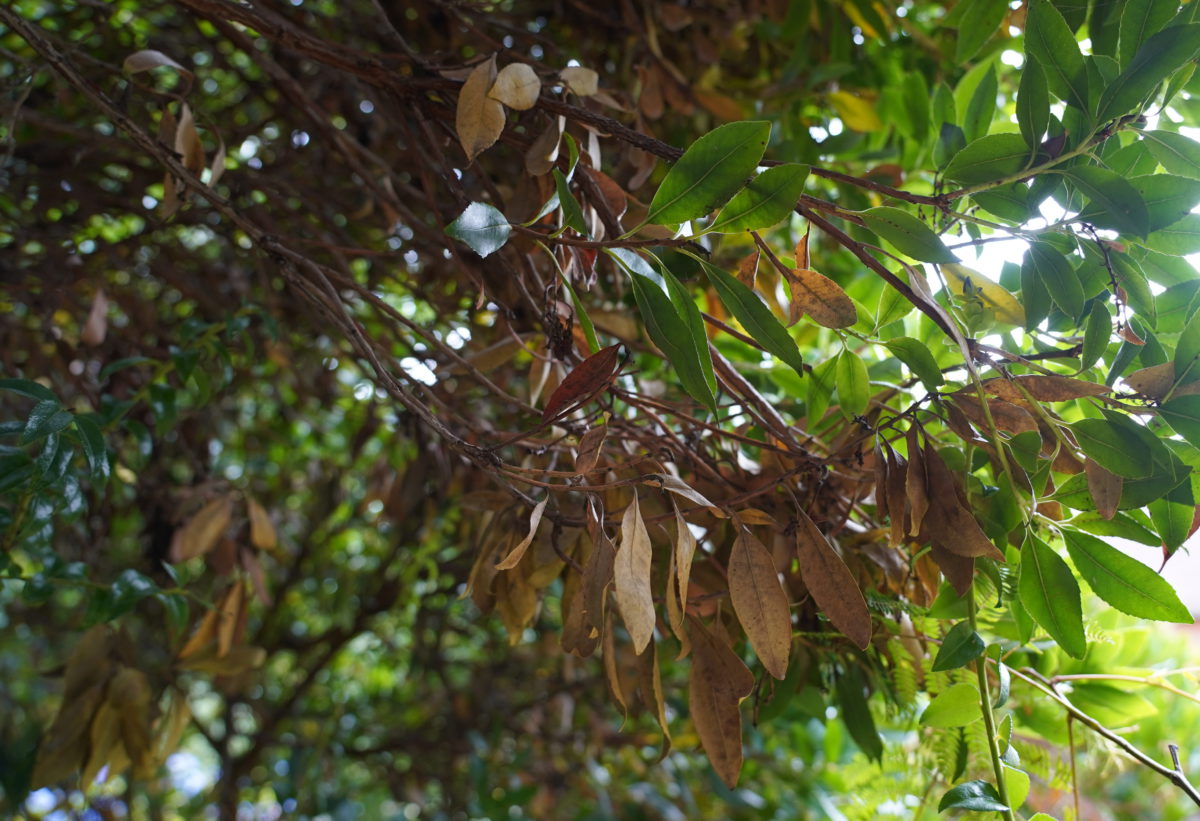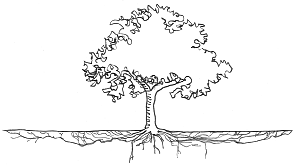
It is important to water your trees to help them survive our hot, dry summers.
We are seeing signs of drought stress in many of our clients’ trees. Perhaps leaves have wilted, turned brown or dropped. Perhaps twigs, or even small branches, have dropped.
Are you seeing these signs in any of your trees? The time to water your trees is now! (Or maybe yesterday.)
Even if you think your trees look OK now, you should water in our dry summer months. The trees may look fine this year, but the damage will show in future years.
With most landscape plants, if they do not get enough moisture, the signs are immediate. Leaves wilt and droop, color changes, and maybe even they even wilt to a point of no return.
With trees, the effects of drought stress take longer to appear, perhaps as much as two or three years. And that is what we are seeing. Our hotter, drier summers are taking a toll. Trees, the most important plants in our landscapes, are taking the biggest hit.
Sometimes we can be lulled into thinking that the occasional rain that we get in summer may be enough for the plants. And yes, many plants, described as drought tolerant, can use less water when it is not available. But even drought-tolerant plants will be healthier if they get the amount of water that they need.
Water your trees to invest in our environmental future.
We hear a lot that people are reluctant to use more water for environmental and financial reasons. We understand that.
But if you care about the earth, consider the important value of large trees in our urban environment. Trees are amazing! They provide shade on hot days, provide shelter and food for wildlife, reduce stormwater runoff, help keep the water clean, clean the air of toxins . . . And the list goes on and on of the positive and valuable contributions of trees.
In the urban environment trees are often given small areas to grow, such as parking strips. These areas do not provide very much space for a root system, so the trees depend on us to help them with the water.
Water your trees to invest in your landscape.
If we do not water regularly, trees can die. Then we have the financial expense of tree removal and replacement.
If we have to replace the tree, we will have to water religiously for at least the first two years just to get the plant established. Plus we will have to wait 10, 20, 30 years or more for the tree to become the plant we wish it could be.
And we will have to do all this because we wanted to save a few dollars on our water bill?
Pest problems and water stress are related.
When plants begin to have water stress issues, they often emit destress signals that many damaging insects pick up on. This is why one tree that is healthy and fine can be right next to a tree struggling, and the struggling tree is ravaged by pests.
Many of our pest problems are water associated. Outbreaks and infestations of aphids, spider mites and lace bugs are all directly related to whether the plant has the moisture it needs to survive and thrive.
Drought kills trees when the plant loses more water through its leaves or needles than it can replace from the soil with its root system. Without enough water, trees cannot make food by photosynthesis.
When this begins to happen, the tree will send out chemical signals to pests so the pests can come in and finish the job. In nature, the weak die and only the strong survive.
Tips for smart watering
If you are going to water your trees or other plants, do it correctly. You need to maximize the water penetration in the soil and minimize the amount of evaporation. Evaporation wastes water; it cannot get into the soil and help the tree.

A tree’s roots are relatively shallow (three feet or less deep), and most roots are within 12 inches of the surface. Roots extend well past the canopy drip line. Illustration: University of Minnesota Extension.
Water the entire root zone area, and then let it partially dry out.
This may take a bit of thinking, because the active root zone for most plants is at the outer tips of the leaves and beyond. For many trees this can be a large area.
It will not help the tree if you water nearer the trunk. No root tips are there bringing in moisture for the plant. So make sure you water the entire root zone area of the plant
Then allow the area to dry out partially. No roots want to be waterlogged all the time, except for rice. Unless you are trying to grow rice, the roots need oxygen. This happens when the soil is allowed to dry out some between waterings.
Water slowly and deeply for healthy plants.
If your soil is already dry, it may take a few waterings to “soften” up the top of the soil layer, allowing water to penetrate deeper into the soil profile.
Soil is like a sponge. If a sponge is allowed to dry out completely, you cannot just pour water quickly onto its top. The water will run off and not penetrate at all. But if you slowly pour the water on the sponge and allow it to soften up the surface, then the additional water will freely percolate through the rest of the sponge.
Check your soil. If it is dry, you will need to water slowly to get the top to soften. We highly recommend oscillating sprinklers as they allow the water to infiltrate slowly to allow deeper watering.
Water when it is cool.
If you water in the heat of the day, most of the water will evaporate into the air before it has a chance to get to the soil. Mornings are the best time to water, with evening the second choice. Be aware that if you regularly water in the evening, it can promote some diseases.
Watering newly planted trees
If you planted any trees this year, or within the last two years, a watering bag is a convenient way to water your trees slowly and deeply. Watch our video for details.
If you follow these simple tips, your trees will get the water they need to thrive. You will help the urban forest stay healthy. And you will sleep safe and sound knowing you are doing your part to keep our trees happy, healthy and growing for the next generation.
